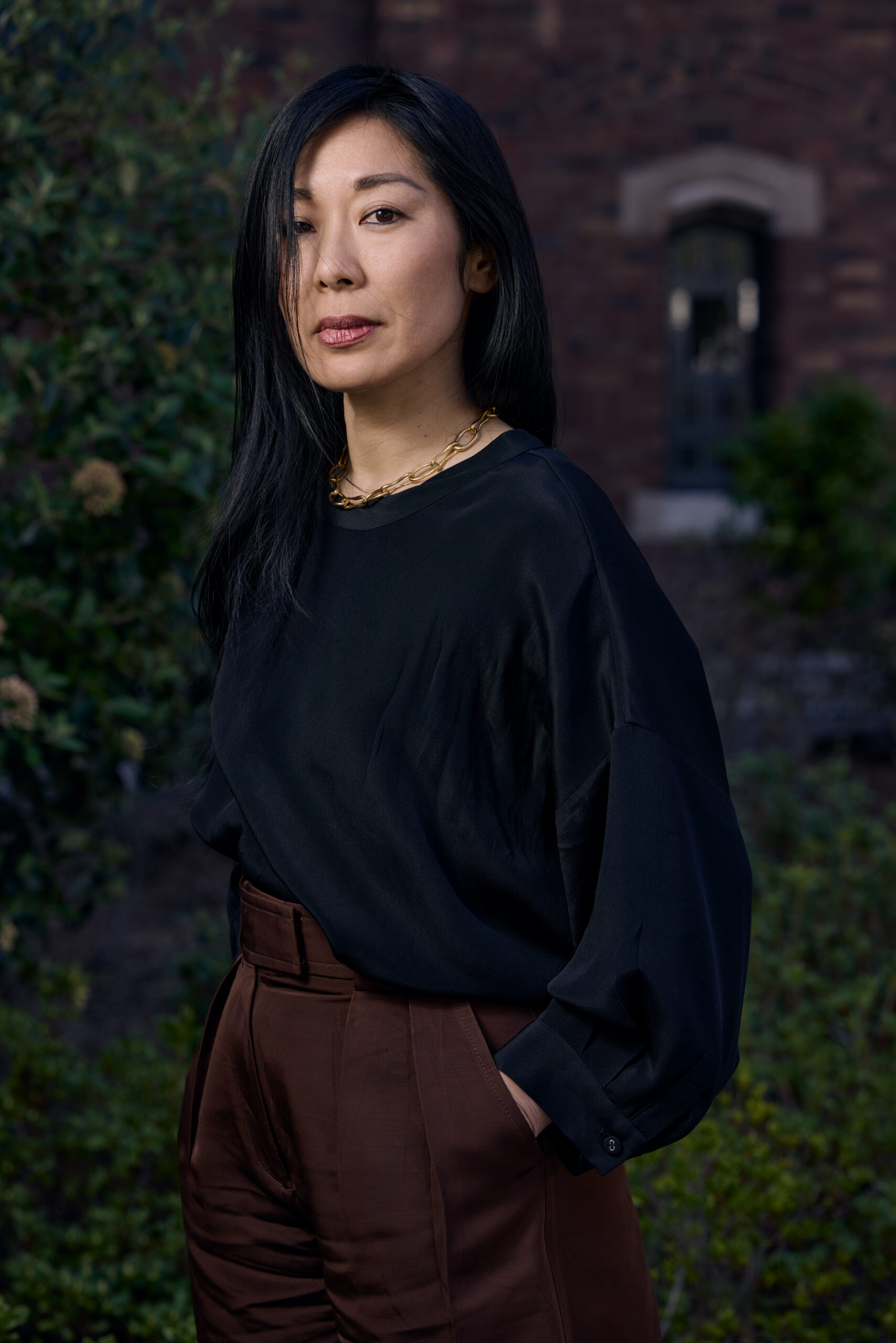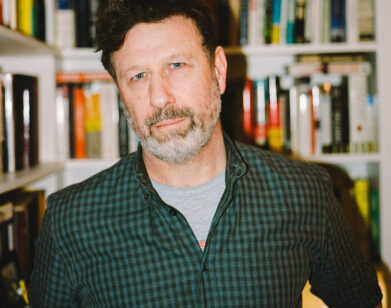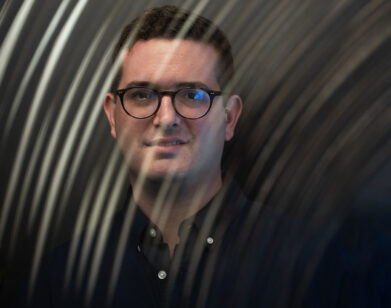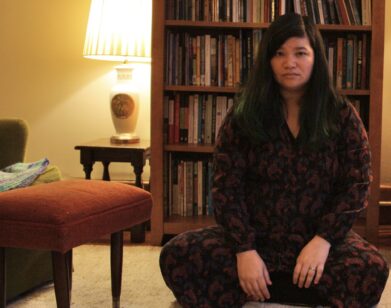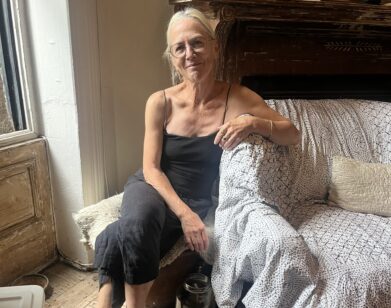PERFORMANCE
How David Lynch and Agatha Christie Inspired Katie Kitamura’s Latest Literary Thriller
Audition, Katie Kitamura’s newest novel—along with her two previous books, A Separation and Intimacies—completes a psychological thriller trilogy driven by a translator, interpreter, and now, an actress. For over a decade, Kitamura has centered unnamed female protagonists as leads enmeshed in suspense, betrayal and mystery. Since 2009, when Kitamura published The Longshot, her debut novel, she’s demonstrated a precision with language and seamlessly taut storytelling, finely honing her prose instead of luxuriating in its effects.
Kitamura’s Audition, her first novel set in Manhattan, thrives on a sense of ambiguity and indeterminacy. The book opens with an actress meeting for lunch with a younger man. Her husband shows up and quickly leaves. And what follows is a performance of a lifetime. On Zoom earlier this year, Kitamura and I dove into the book’s collaboration with readers. She acknowledges that readers are smart and hands over the reins, making us complicit in her Rubix-cube narratives. Accordingly, Audition invites multiple reads; revisiting the novel, I came away with an entirely different conclusion of what had taken place. From her writing, I wondered if Kitamura was a big Agatha Christie fan, a suspicion I was able to confirm.
———
KATIE KITAMURA: I grew up on Agatha Christie novels. Her narrative structures infiltrated my childhood. I read those books dozens and dozens of times. Her novels have ingenious plots, but what’s really impressive is that they continue to hold power even when you know the solution to the murder. People often speak about books and reading as if they’re somehow less interactive than other forms of culture, in particular online culture. But reading is one of the most profoundly interactive things that we do. I feel that so strongly as a reader. Books change according to when I read them in my life. They change depending on when I read them over the course of a week. When I read a book, I know that a large percentage of what I’m experiencing is coming from me.
With this book in particular, I wanted to invite the reader to step inside and to create the book with me. It was important to create footholds, points of stability and shared reference, so that the book had the foundation from which multiple variations or interpretations could grow. In my experience as a reader, the more that is demanded of me, the more I’m able to give. A book that doesn’t ask very much of the reader can sometimes mean, in turn, that the reader can’t give very much back. I’m drawn to books that ask questions of the reader. I just finished Cristina Rivera Garza’s Death Takes Me. The book has the structure of a mystery, but none of the solutions are necessarily apparent, or fixed, and the reader is asked to interpret constantly. I find that incredibly engaging, the fact that I can read it multiple times and come out with different things and see different aspects of it.
YVONNE CONZA: You’re doing something daring with a novel that says, “This book can be read more than once. In fact, that’s what I want.”
KITAMURA: When I started writing, I had a version of this book that was much more straightforward. There was a couple, and a stranger comes to them and says, “I think I’m your son.” Slowly over the course of the novel, they start to role-play the fantasy that they are a family. That was the entirety of the book. Then at some point, I thought, I would like to take a risk with this book—a jump. And maybe there’ll be nothing there to catch me, but I would like to try. So I rewired it so that the narrative was much more unstable. First, rather than saying, “This is a family sliding into a fantasy,” it would say: “Here is the fantasy itself presented as a reality as they might experience it.” It’s up to the reader to decide which version is real and which version is imagination, so to speak. And then I wanted these non-contiguous pieces to form, in a fractured way, a portrait of a singular character.
Form and structure are incredibly important in terms of how they inform storytelling and narrative; in this book, I wanted to really use structure in order to inform psychology and characterization. Plot is really interesting to me. People often think of my work as not being plot-driven, and I think that’s a fair characterization. With this book, I was interested in finding a way to do plot and create meaning that is arising not out of a sequence of events, but out of the structure of the book itself. Can the structure and the placement of the parts create tension? Can the placement of the parts create meaning? Can the placement of the parts create actual narrative events in the mind of the reader? In this book, I was trying to move both away and toward plot. Does that make sense?
CONZA: It does. That’s what is exciting about this book. In terms of structure, you could do a side hustle and turn this novel into an interactive board game. There’s a dynamic way the blurriness exists in the clues, the footholds, what I’m calling a Kitamurazation, where the coalescing of performance, workplace tensions in scenes with real or fantasy components, play out in real time.
KITAMURA: I wanted the book to be a little bit like a David Lynch film, in the sense that the effect is the effect. But for me as a writer, if I didn’t have a strong structure in my head for what I thought the book was doing, then the writing would feel too haphazard.
CONZA: Talk about the book’s structure.
KITAMURA: It’s designed to be very open to interpretation. I wanted the underpinning structure to be a Möbius Strip where you might interpret either half of the book as the stable reality, with the other half acting as the fantasy. You might read the novel as being about a woman without a child who fantasizes about having a child, or you might read the novel as being about a woman with a child who has in some way rejected that child and created a fantasy version of what that rejection looked like.
In the second half of the novel, I started to introduce a lot of elements of fuzziness. The scenes had to play in two or three different ways. They had to have the right amount of unreality to them so that you could sense the edges of her reality starting to fall away. One of the more challenging parts of writing the book was going through and making sure there was nothing too decisive in that second half, so that it had that feeling of a mislocated memory. She’s often saying that she can’t quite place a memory. That is a difference between the two halves of the book.
CONZA: Were you conscious of the role of the workplace for the female protagonists in your trilogy?
KITAMURA: Definitely. The work that they do is indistinct from their character and the way they operate on the page. In Intimacies, it’s almost in the physical placement of the character in her workplace, which is in an interpreter’s booth, adjacent to primary action and the primary narrative of the workplace. That is very much her position in her own life. She’s a bystander in her own life. She is trying to figure out how it is possible, or if it is possible, for her to step forward into her own life. That was definitely part of the project.
CONZA: The position of women in workplace environments tells you a lot about how institutions function.
KITAMURA: Yes, and it also tells you a lot about how gender politics function. The workplace is an opportunity that allows fiction writers to think about big structural ideas, but to do it in a way that’s very, very grounded in the minutiae of day-to-day experience. For a long time, I wanted to write a novel about the international criminal justice system and the biases within that system. But I kept thinking, where is the in? And, why is it a novel rather than an essay? For me, it becomes a novel through the attention to the lived experience of the individual characters. When you’re writing about workplace, there is so much texture and so many small interactions, mini power plays that, even in a single scene, can tell you a great deal about how that place is functioning as an institution as well as how power is distributed and exerts itself. All of that is very fascinating to me and was definitely something that I wanted to explore across these three books.
CONZA: It was welcoming because a woman’s role in a novel is often underserved. Also, I loved how you got every detail about the theater life so eerily right.
KITAMURA: Thank you. That is a relief.
CONZA: Working in a theater company, it becomes a family, often a dysfunctional one. The rehearsals, the rivalries that occur, and the development of the confidence required for a role was spot on. It was unnerving to remember those moments when, as an actor, I sometimes got carried away inhabiting a role.
KITAMURA: I was lucky to have a couple of friends who are actors and whose work I’ve observed for many years now. Some of them have had quite dramatic arcs to their careers. It’s been interesting to follow them from small downtown theaters to opening movies. It’s a real gamut. In terms of writing about acting, it’s a way to write about writing without writing a novel that was about a novel, or indeed a novelist. There are occasions when my husband comes out of his office to cook dinner for the kids and his brain is 40% still in the world of the novel; that’s when I know it’s going well. It also tends to mean that the novel is close to being done because when you get that level of stickiness where you can’t step outside very easily, it’s a real sign that the work is coming together. That’s incredibly gratifying, both to experience and to observe.
CONZA: Are you seeing this as the end of the trilogy?
KITAMURA: Yes. The book that I’m working on right now is different in some fundamental way to these three books. I’ve written maybe half of it, but it feels different.
CONZA: When were you able to start this new project and move away from these books?
KITAMURA: I tend to not take a break between books. I just start writing the next thing, almost immediately. On the other hand, there are many breaks in my writing process over the course of writing a book. I tell my students this all the time in an attempt to comfort them for not getting as much writing done as they would like. The project for these three books had to do with creating a particular voice, which had to do with an interest in passivity, with speaking the words of other people. They’re all characters who are literally vessels for other people’s words. That’s not the case with what I’m writing now. In a lot of ways, with Audition, the third book, a lot of the themes that I was playing with in A Separation and Intimacies came to a head. They’re all very much tied up in the idea of performance and performing versions of ourselves to ourselves and for other people. Having said that, this new book won’t be wildly different. The difference will likely be visible to me and to nobody else.
CONZA: You talked about breaks in your writing process. How does that inform the writing?
KITAMURA: With this book I took breaks from it and then went back to it to see if it still worked. At the later stages in the writing process, you have to turn yourself into the reader of your work. You have to come fresh to the pages and imagine what it’s like if you have not been intricately involved in the plotting and the writing of the book. In particular, I worked quite a lot on that opening scene to make sure that you could read it in multiple ways. It was tricky. Writing this book, I would take two or three months off, then come back and do a pass on it, repeating this process until I was certain it held water. I sat on the manuscript for almost six months before I sent it to my agent, even though nothing really changed in those six months. Each read through, I’d make a few small changes and then let it sit, which is not how I’ve ever worked before. Sometimes it would be reworking a sentence that gave too much away. All very, very small changes, but they felt quite significant.
CONZA: I thought you were going to tell me chapter seven, not the opening of the book, was the hardest to write. That one has to be so spot on, with no room for a mistake.
KITAMURA: Chapter seven was the one I had a lot of fun writing because it was the chapter where I had held this thing in reserve and then I got to take it out and play with it. The biggest question in that chapter was about pacing, when and how you start to introduce the breaks in the reality. It was important to have these small early indications that something was different before making a more definitive move. For example, early in the chapter the play’s title changes.
CONZA: I wondered if my galley wasn’t updated because of the play’s title change. When I reached out to your team, they laughed and said, “Nope. You got the updated version.” With the end of the trilogy, what is it about yourself that you have come away with learning?
KITAMURA: That’s quite a profound question. I’m not one of those writers who grew up dreaming of writing. I also came to writing relatively late, without training, starting fiction in my mid-twenties. I always thought of myself, and still do, primarily as a reader. I did a PhD in American literature. I didn’t do an MFA. For a long time, there was a lot of concealment happening in my writing. In my early fiction, I was always trying to not show myself. Then, of course, I realized fiction is all about exposure. Now, I’m more comfortable and confident as a writer. I don’t think that means that I’ve become better at writing because I don’t believe in that kind of progression. But in my experience, you don’t become better from book to book because the demands of what each book needs are so different. There’s no linear progression. But I do think that I don’t get in my own way as much as I used to. In this book, I tried to be a bit bolder and to be more upfront about the risks that I wanted the book to take. I don’t think that even two books back, I would have felt confident enough to deviate from the more standard path of a novel as I’d come to understand it. But this time, I felt more comfortable showing my desires as a writer, more comfortable knowing what I wanted this project to be.

